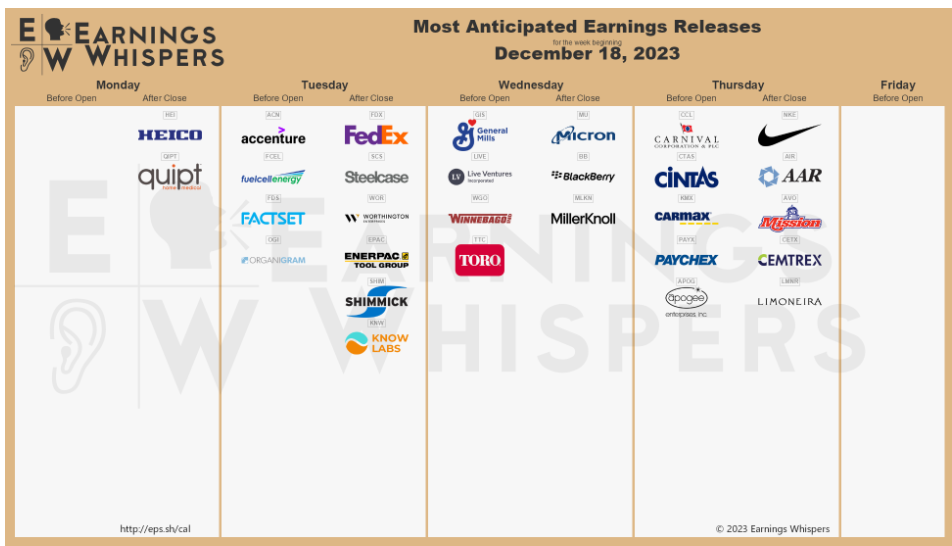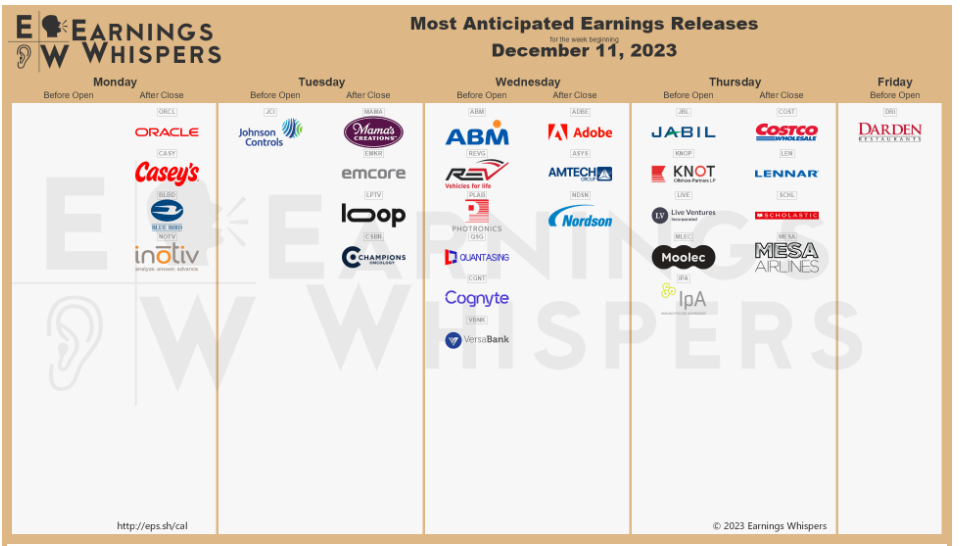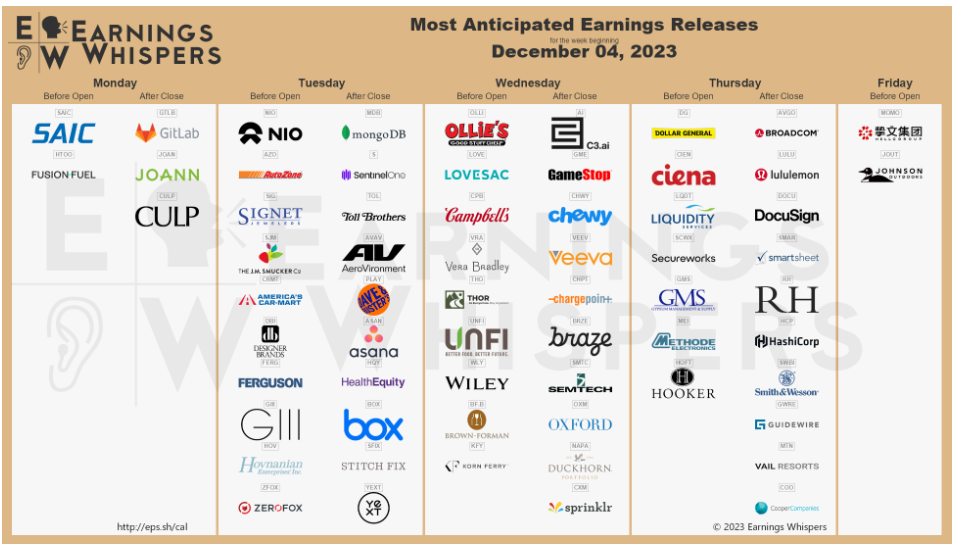Week of Dec 22, 2023 Weekly Recap & The Week Ahead
Wednesday, December 27th, 20231. Fed Official Says Rate Cuts Could Be Needed Next Year to Prevent Overtightening — San Francisco Fed President Mary Daly said her outlook for interest rates and inflation was “very close” to the median of projections from 19 Fed officials last week. Most of them penciled in at least three rate cuts next year amid a faster decline in inflation than they anticipated. Daly said she is watching the effect that restrictive policy has on the labor market. When the unemployment rate starts to rise, it tends to go up by a lot and not by only a little bit, Daly said. As a result, “we have to be forward looking and make sure that we don’t give people price stability but take away jobs.”
Daly said she thought interest-rate policy was in a “good place” to achieve that result. In a notable shift, she said the Fed’s focus now needed to turn toward paying attention to both sides of its mandate.
2. Home Sales Ticked Up in November After 5 Months of Declines — home sales ticked up from 13-year lows in November after five consecutive months of declines, even as mortgage rates near their highest levels in two decades continued to weigh on sales.
Existing-home sales, which make up most of the housing market, increased 0.8% in November from the prior month to a seasonally adjusted annual rate of 3.82 million, the National Association of Realtors said Wednesday. November sales fell 7.3% from a year earlier. Existing-home sales for the full year in 2023 are on track to be the lowest since at least 2011. Affordability has improved slightly since then, as mortgage rates have declined for seven consecutive weeks and fell below 7% last week. That could spur more home-buying activity in early 2024, real-estate agents say.
3. U.S. third-quarter GDP growth trimmed to 4.9%, with consumer spending not quite as strong — growth of gross domestic product, the official scorecard for the economy, was reduced from a previously reported 5.2% in the government’s third estimate. It was still the biggest increase in GDP in a decade, however, excluding the pandemic years of 2020-21.
Yet while the economy is still growing, it’s cooled off quite a bit. GDP is forecast to increase by a mild 1% to 2% in the final three months of 2023. Business investment, the next biggest part of the economy, expanded at a slightly stronger 2.6% pace. Business profits, meanwhile, increased for the second quarter in a row. They rose 3.4%.
The annual rate of inflation in the third quarter was revised down to 2.6% from 2.8%. The increase in the core rate that excludes food and energy was marked down to 2% from 2.3%.
4. Prices Fell in November for the First Time Since 2020. Inflation Is Approaching Fed Target — the personal-consumption expenditures price index fell 0.1% in November from the previous month, the first decline since April 2020. It was up 2.6% on the year. Excluding food and energy prices, the index was up 0.1% on the month, same as in October. On the year, core inflation was up 3.2% in November, down from 3.4%. The Federal Reserve targets 2% annual inflation using the PCE price index.
On a six-month annualized basis, core inflation eased to 1.9%, suggesting the Fed is well on its way to reaching the target. Consumer spending, meanwhile, was up 0.2% on the month in November, higher than 0.1% in October and a sign of confidence in the economy on the part of American households. Overall personal income was up 0.4%, better than 0.3% in October.
Merry Xmas and wishing everyone a happy, healthy and prosperous New Year. The staffs at EGS Capital.


